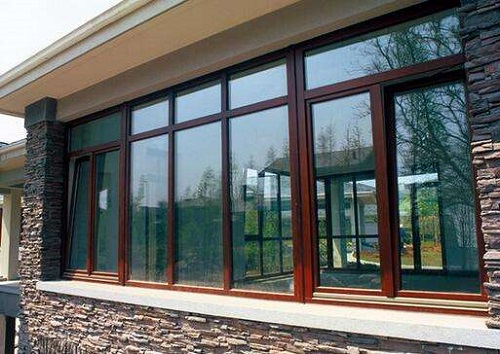Science and technology of door and window performance data!
[Zhongbo.com] 1. Insulation, that is, K value 2. Wind pressure resistance 3. Water tightness 4. Air tightness 5. Light fairness 6. Sound insulation and noise reduction
First, what is the K value of doors and windows?
Concept: The K value is also called the heat transfer coefficient. In the past, the total heat transfer coefficient was called. The current national standard and standard are uniformly named as heat transfer coefficient. The heat transfer coefficient K value refers to the heat difference between the air on both sides of the enclosure under the condition of stable heat transfer is 1 degree (K, °C), and the heat transferred through the area of ​​1 square meter in one hour, the unit is watt / square meter. Degree (W/m2•K).
Heat transfer coefficient K (W/m2•K) of various door and window materials: common aluminum alloy profiles: 6.6; heat-insulating aluminum alloy profiles: 4.0; wooden window frames: 1.8; 5mm white glass: 5.5 (5+12A+5) ) mm in the blank glass: 2.8; (5 + 9A + 5) mm in the blank glass: 3.0; (5 + 6A + 5) mm in the blank glass: 3.2!
Simple calculation method of door and window K value (not considering air tightness): In general doors and windows, the area of ​​profile is about 25%, and the area of ​​glass is about 75%!
Calculation method for heat loss of doors and windows: Calculate the total heat loss of the window with a heat transfer coefficient K of 3.5 W/(m2•K), a heating outdoor temperature of 0 °C, and a heating indoor design temperature of 20 °C (Note: air infiltration is not included) Heat loss due to leakage): 3.5 × (1.2 × 1.5) × 20 = 126 W / h

Second, what is the wind and pressure resistance of doors and windows?
Concept: Wind pressure resistance refers to the ability of a closed external (door) window to be free from damage and dysfunction under wind pressure. This indicator is a more important one of the three basic physical properties of doors and windows. The wind and pressure resistance design of doors and windows is implemented in accordance with the relevant requirements of GB 50009 “Building Structure Load Specificationâ€.
Third, what is the watertightness of doors and windows?
Watertight performance refers to the ability of the closed outer (door) window to prevent rainwater from leaking under the influence of wind and rain. This indicator is one of the three basic physical properties of doors and windows.
4. What is the airtightness of doors and windows?
Airtight performance refers to the ability of the outer (door) window to block air penetration when it is closed. This indicator is one of the three basic physical properties of doors and windows.
5. What is the lighting of doors and windows?
Concept: Lighting refers to the brightness of light and sunlight. Daylighting coefficient: refers to the ratio of the area of ​​the window opening of the house to the floor area of ​​the house. In general building doors and windows, the area of ​​the profile is about 25%, and the area of ​​the glass is about 75%.
Sixth, what is the sound insulation performance of doors and windows?
The sound insulation performance of doors and windows refers to the ability of doors and windows to attenuate the sound transmission from the sound source to the listener. At present, there is no mandatory requirement for sound insulation performance of doors and windows for national standards and standards.
We are counted as the well-known manufacturer, exporter, trader and supplier of quality approved Non Woven Slippers. Specially design for wearing inside the home or rooms, these room slippers are designed consuming quality assured basic material and finest technology. According to the details given by our customers, these room slippers are provided in different dimensions and other correlated stipulations. In addition, clients can purchase the offered room slippers from us at pocket friendly rates.
Disposable Slippers,Non Woven Slippers,Hotel Non-Woven Slipper,Guest Slipper
Yangzhou Lansun Slipper Co.,Ltd , https://www.lansunslippers.com